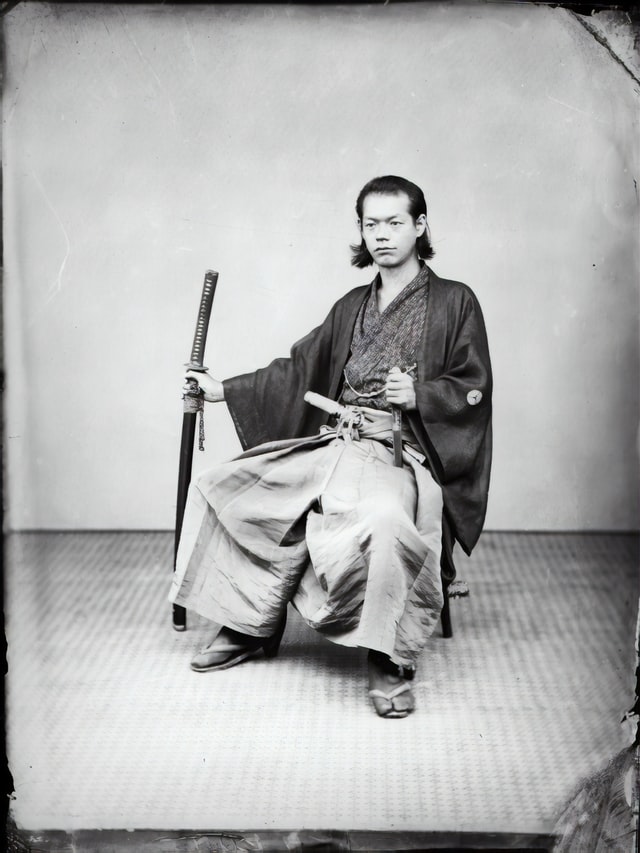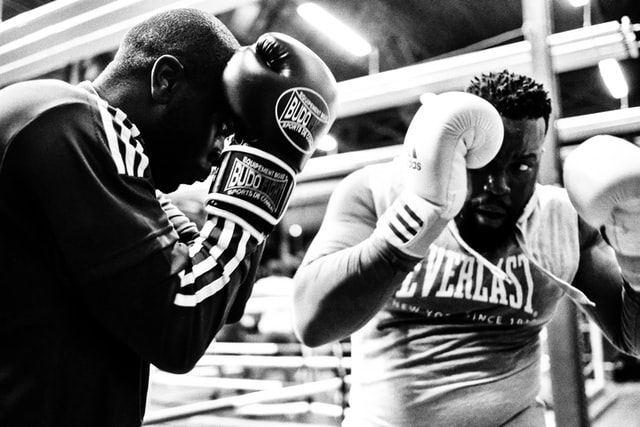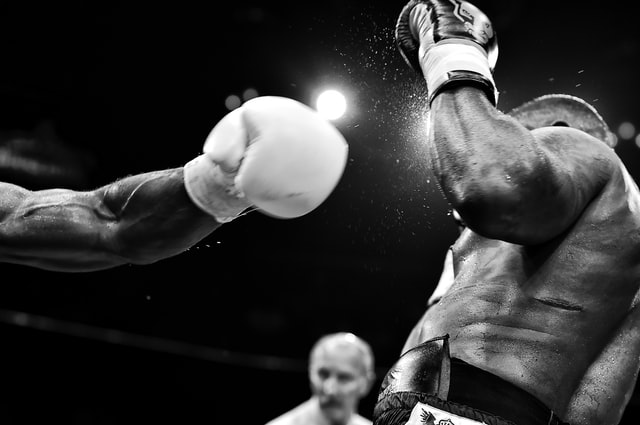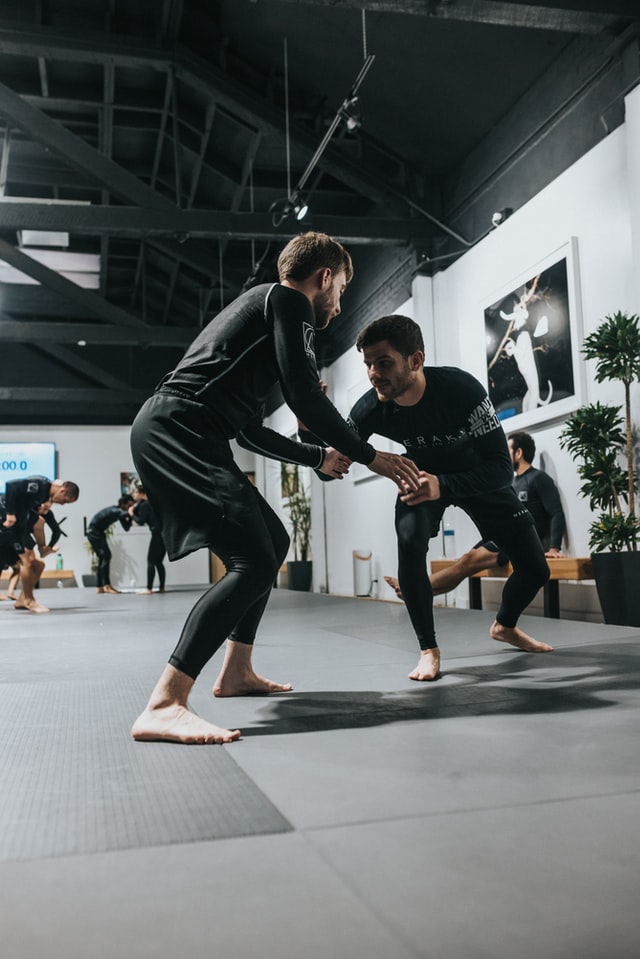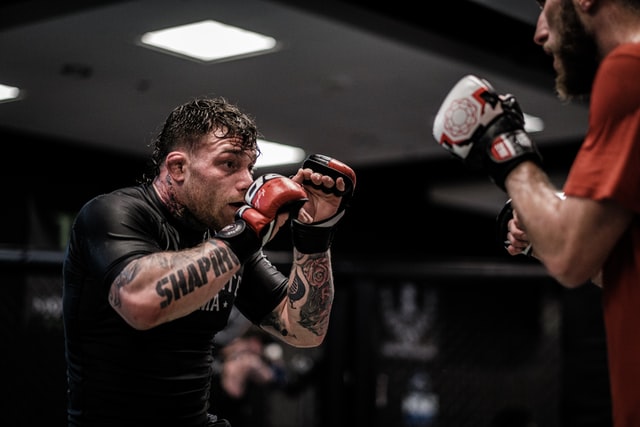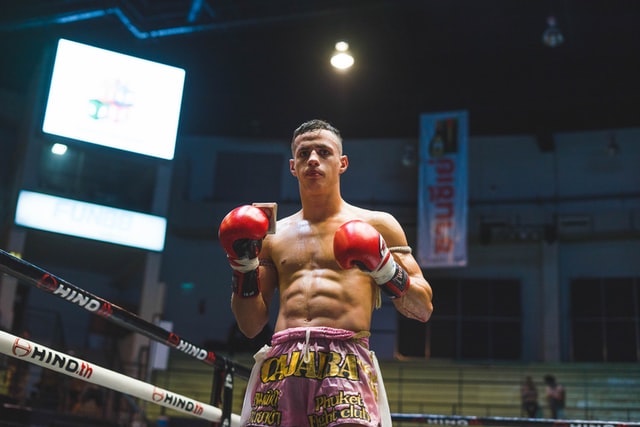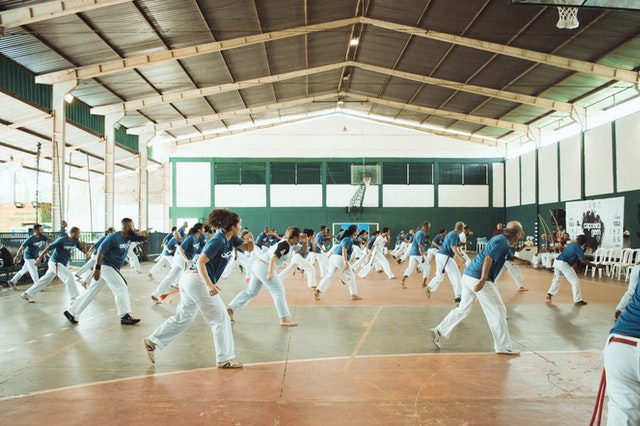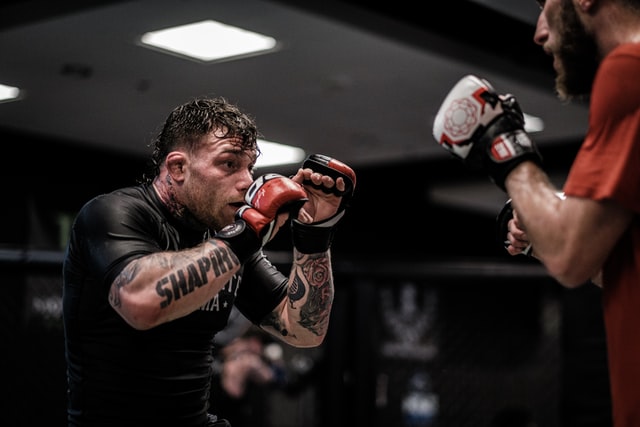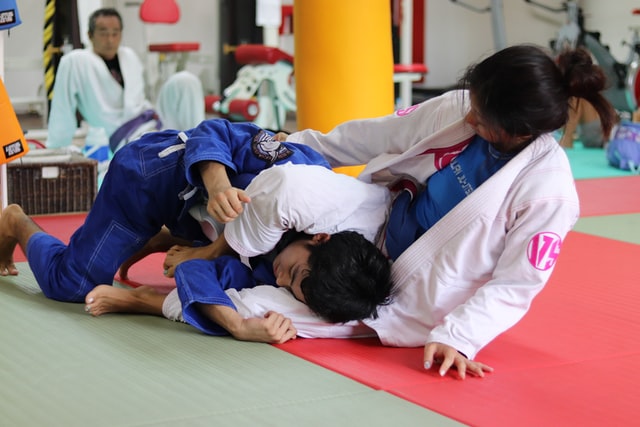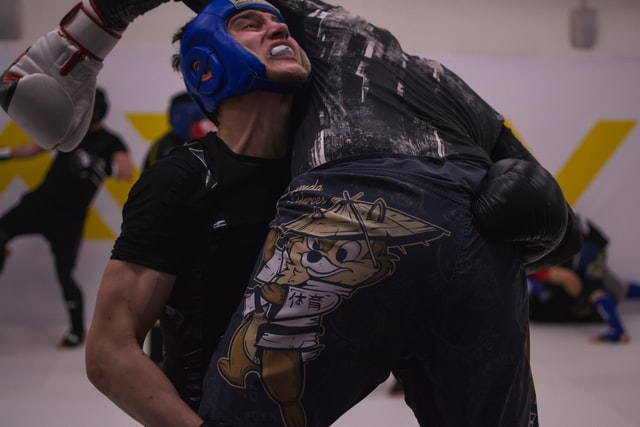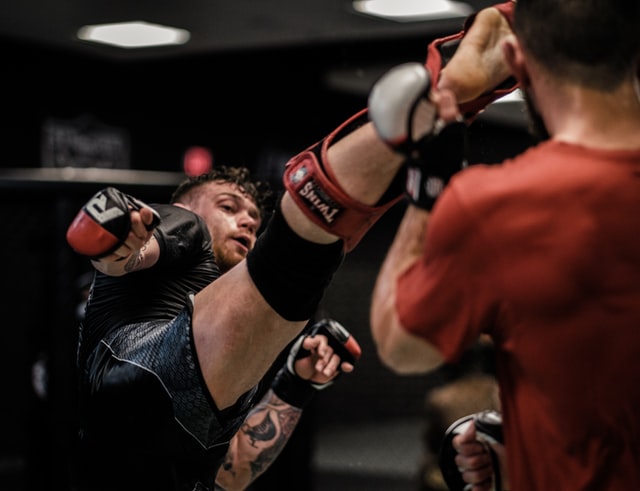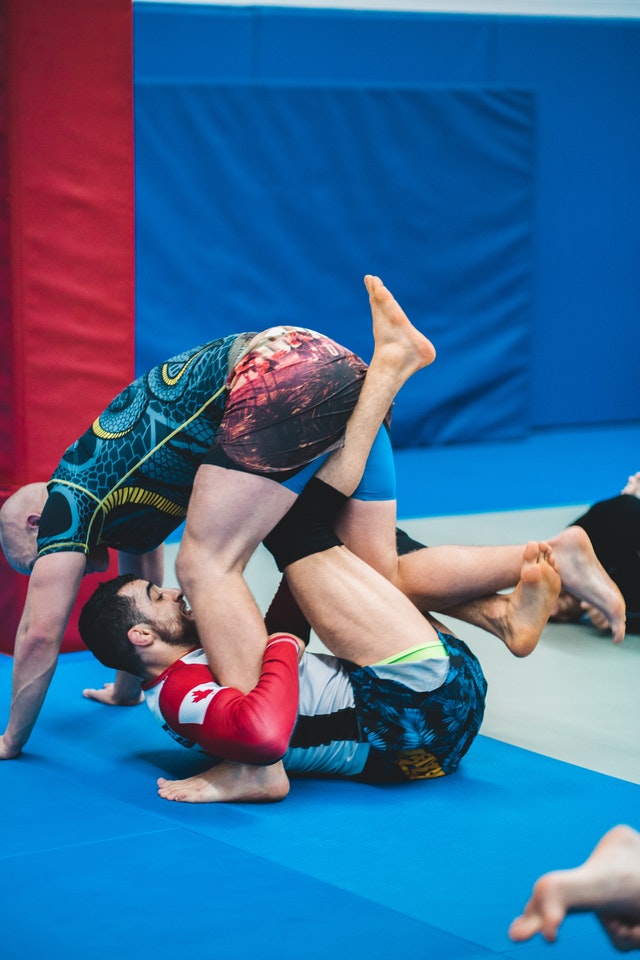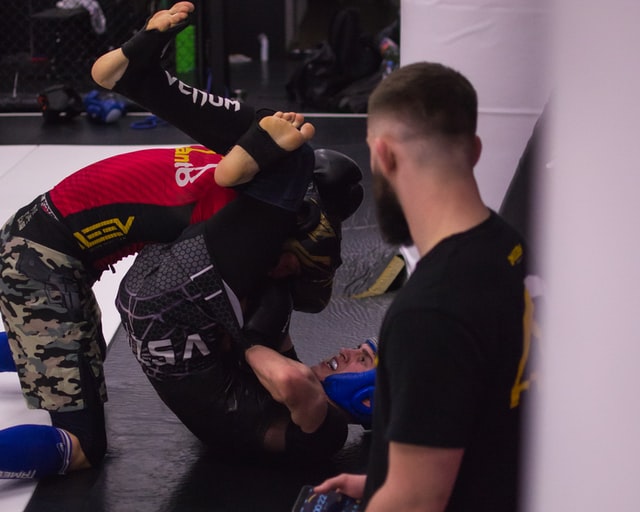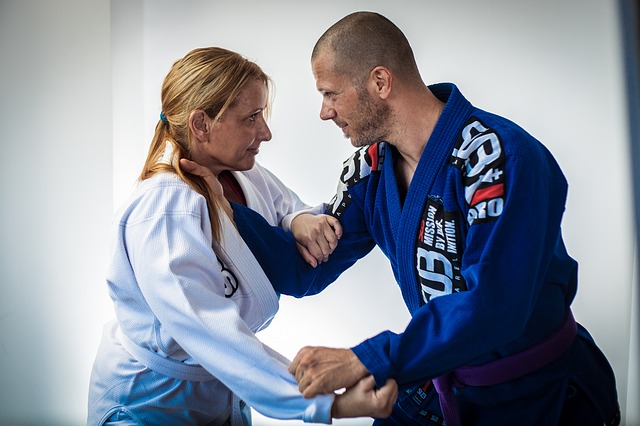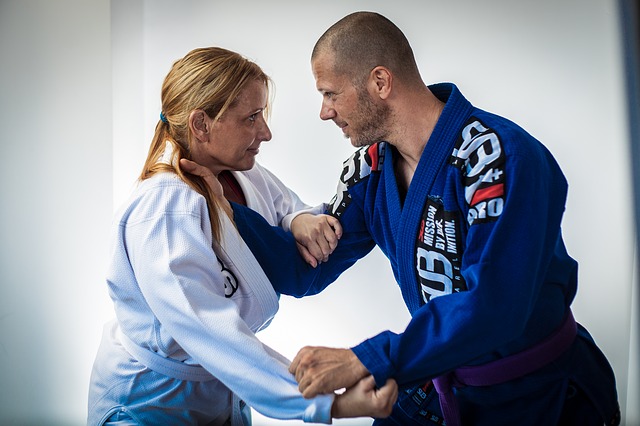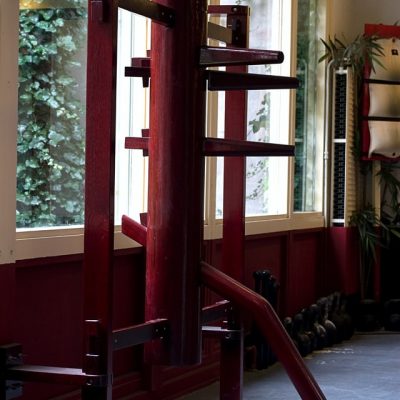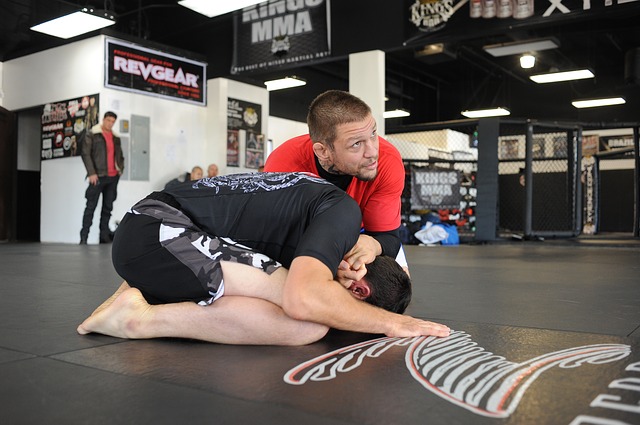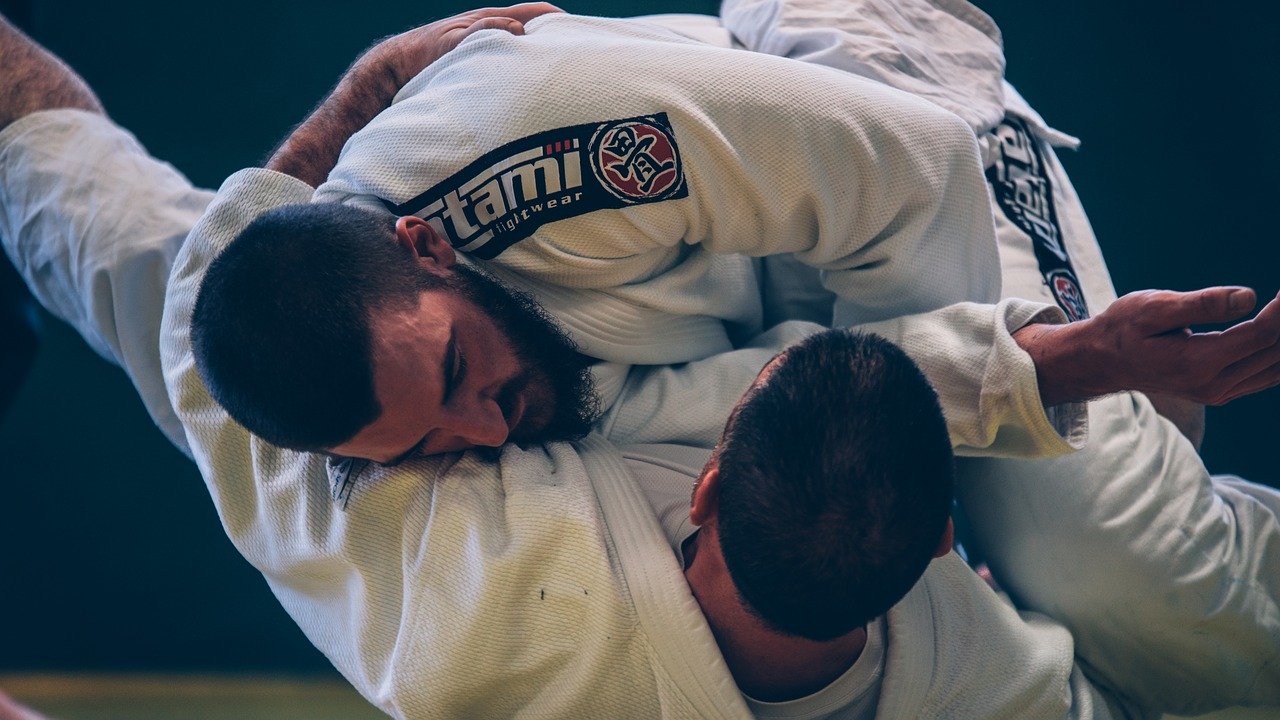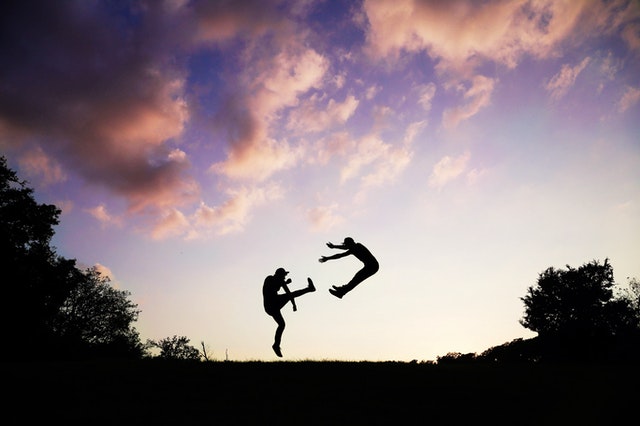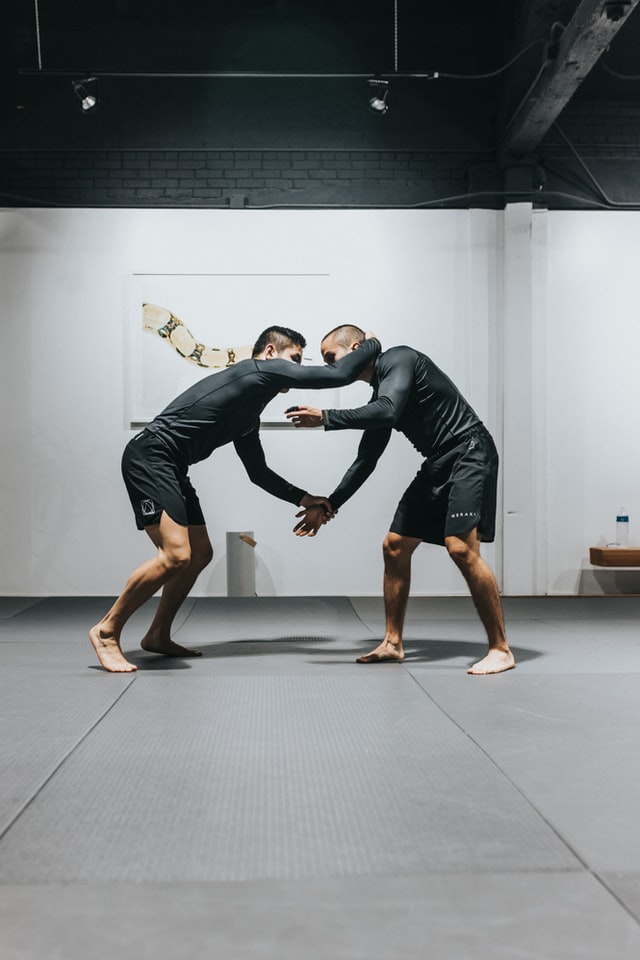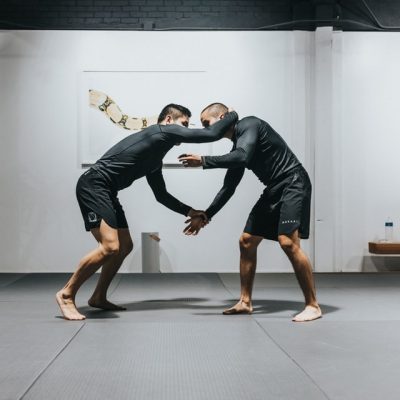BJJ vs. Aikido – The Ultimate Guide for 2020
Are you looking to take up either BJJ or Aikido? Are you unsure of how they are different? Read our article to learn everything you need to know.
People from different origins and walks of life practice martial arts for various reasons, including fitness, self-defense, entertainment, stress-relief, etc. It has also become an entertainment source through multiple sports such as the Ultimate Fighting Championship and One Championship. Two of the modern martial arts that are most talked about are Brazilian Jiu-Jitsu and Aikido. In this article, we will discuss them thoroughly.
Jump to Section
Differences Between BJJ and Aikido
Most people who do not practice martial arts think that BJJ and Aikido are the same. While they may look the same to the untrained eye as they both utilize grappling techniques, that is not the case. There are some fundamental differences between BJJ and Aikido.
- Fighting Style: Aikido is used to fight upright on both feet, while BJJ teaches us to fight on the ground to overcome size and weight differences. Aikido teaches us to deflect the opponent’s attacks while BJJ teaches us to subdue them.
- Evolution: While Aikido has not changed since its creation, BJJ has changed and improved with different styles that were taught from within the fundamental techniques.
- Philosophy: Aikido places vast importance on reducing harm to the user by redirecting the opponent’s attacks; BJJ focuses on subduing larger foes using different combinations of techniques.
- Aggressiveness: Between the two, Brazilian Jiu-Jitsu is the more aggressive martial art.

History of BJJ
One of the world’s fastest-growing martial arts is Brazilian Jiu-Jitsu (BJJ). It is also written as jujitsu or jujutsu. In literal words, the Japanese term ‘Ju’ means gentleness, and jutsu means art or technique. Thus, its literal translation is ‘gentle art.’ Even though this form of martial art has come into attention only recently, mainly due to the soaring popularity of several mixed martial arts competitions, BJJ’s origins can be traced back to several centuries.
According to most people, BJJ was erected by a family known as the Gracie family, who were taught by Misuyo Maeda. While this is not wrong, it also does not paint the full picture.
The beginning of the story of BJJ starts in Feudal Japan. The Japanese samurai practiced an early form of Jiu-Jitsu to use them on the field. These warriors usually engaged in armed battles on horseback, and they developed the gentle art as their last line of defense when they were to find themselves in the battleground bare-handed and on foot. This art form mainly contained throws, joint locks, using chokes rather than strikes as the samurais wore heavy armor, which restricted their movement too much to perform striking techniques. As time passed, this form of Jiu-Jitsu branched off to various styles and transferred its focus from armed combat to a self-defense technique.
With the decline of Japanese feudalism, their martial arts also faced a decline. Then, a student of the traditional Japanese martial arts, who later came to be known as Jigoro Kano, made an effort to preserve these arts. In 1982, he founded a school where martial arts were taught and named it Kodokan. In this school, Kano instructed his students on his personal preference for the most effective Japanese Ryu or art techniques. A unique perspective of these techniques would later be known as Judo.
In 1894, a son of a sumo fighter named Mitsuo Maeda began his training at the Kodokan. Eventually, he became one of Kano’s most prized students. While Maeda was well-versed in takedowns and throws, his specialty was Newaza or ground-fighting. Maeda traveled to the US in 1904, along with a few teachers from Kodokan. Their form of martial art had many American admirers. Because of his incredible feats, Maeda was given the nickname of Conde Koma. In 1914, the martial artist sat his foot in Brazil and began the journey to change the history of this art.
After going to Brazil, Maeda settled in Belem, where he took on a capoeira artist named Pe De Bola. Maeda weighed 68 kg with a height of 5’5″ whereas his opponent was a man of 6’3″. While Maeda was unarmed, Bola used a knife. Nevertheless, Maeda came out victorious. In 1917, a teenage boy named Carlos Gracie saw an incredible display by the Japanese warrior known to take down giants. Maeda was a friend of that boy’s father, Gastao Gracie. Later, Maeda would take in young Carlos as his student.
As a faithful student, Carlos Gracie welcomed Jiu-Jitsu, and he started teaching this art to his siblings. One of his younger brothers, Helio, faced problems executing these techniques due to his weaker physique. So, he started to make some adjustments to the techniques so that the art can be executed no matter the physique or strength. It was from these innovative techniques made by Helio Gracie that Brazillian Jiu-Jitsu was born.

History of Aikido
The word ‘Aikido’ is often translated as a harmonious spirit of unifying with life energy. It’s a form of martial art that is focused only on self-defense. It has similar fighting techniques to that of Jiu-Jitsu and Judo as it also utilizes the technique of twisting and throwing, and it aims to turn the attacker’s momentum and strength against him. Aikido emphasizes the necessity of achieving mental peace and control of one’s own body to read any opponent’s attack.
Aikido was originally developed in the early part of the 20th century by Morihei Ueshiba, now known as O-sensei or venerable. From a young age, Ueshiba studied different forms of martial arts, such as sumo, swordsmanship, staff technique, spear technique, and various forms of Jiu-Jitsu, especially the Daito and Yagyu styles as a way of making himself strong after seeing his father getting beaten up for political reasons.
From youth, when we cannot finish watching a movie in one sitting to save our lives, Morihei Ueshiba had been a calm, sensitive, and deeply spiritual person. Even after gaining such knowledge about different forms of martial arts and becoming healthy, Ueshiba felt dissatisfied. He plunged himself into religion to find a more profound significance of life while continuing to pursue to develop his knowledge of martial arts.
He was then influenced by the charismatic spiritual artist and leader Onisaburo Deguchi. Ueshiba came to view his martial arts training as his way of personal purification through spiritual training.
During his lifetime, Ueshiba saw Japan get involved in some of the most vicious conflicts of the 20th century, culminating in the Pacific war. During that time, Morihei Ueshiba founded Aikido and declared it to be the way of joining the citizens of the world in peace. That is why Aikido is more than a bugei or martial art or a bujutsu or a martial technique. It is, in essence, a budo or a martial way. The true meaning of Aikido can be found in one of O-sensei’s most revered quotes, “True victory is victory over the self.”
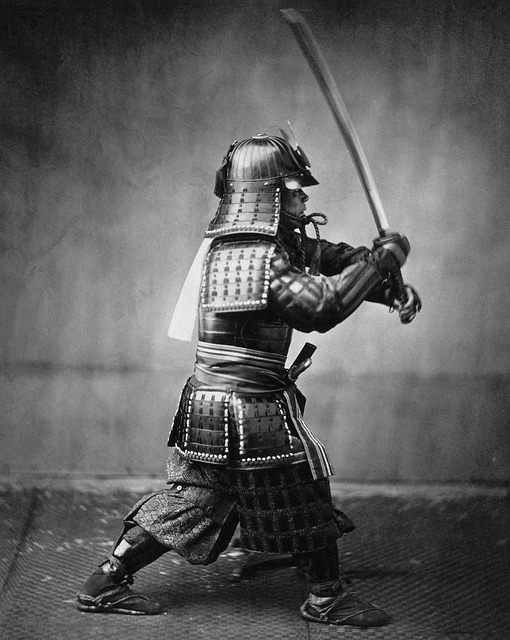
Rule Difference Between BJJ and Aikido
Even though Aikido and BJJ originated from the same land, they vary greatly. However, they also have some similarities in their techniques and their philosophical stands.
Brazilian Jiu-Jitsu is a combat sport. It has many tournaments and competitions at different levels, including country, continent, and world level. These tournaments are organized by distinguished federations such as IBJJF, UAEJJF, etc. These tournaments are usually broken up into style brackets. One can win the competition by making the opponent submit or by earning points throughout the match. There are some joint locks or strangles that are permitted by the BJJ federation that count as submissions.
On the other hand, Aikido is strictly a self-defense martial art. It has no competition. As its founder, Morihei Ueshiba has said, ‘There are no contests in the Art of Peace. A true warrior is invincible because he or she contests with nothing”. So, having competition would go against its founding philosophy.
Belt Systems and Progression Differences
Although both these martial art forms follow a belt system, they are not entirely similar but have some differences. The ranking systems in both forms are done by color, but the systems are a bit different. The Aikido has six ranks represented from bottom to top: white, yellow, orange, blue, brown, and finally, the black belt. In contrast, Brazilian Jiu-Jitsu has five levels for adults: white, blue, purple, brown, and black.
BJJ Belts
White Belt: The white belt signifies the beginning of our journey through the world of BJJ. The wearer of this belt’s aim would be to learn proper defense and survive. There is no required time set for a practitioner of the art to stay in this belt, according to the IBJJF. However, it is advised to take 6-18 months before moving on to the next rank.
Blue Belt: Wearing this belt means that the wearer has a basic understanding of Jiu-Jitsu positions. After we put enough work into training to be acknowledged by the instructor, we would only be ready for the blue belt. The IBJJF has set a time limit of at least two years where the practitioner must stay a blue belt holder.
Purple Belt: A purple belt holder has a basic understanding of every primary Jiu-Jitsu position and now the art is a massive part of their life. After getting to this rank, the practitioner focuses on filling the gaps in their techniques. Purple belt holders must put in a lot of work to become proficient in all the areas and because of that, they tend to get more attention from the instructors. The IBJJF requires a purple belt holder to remain in that rank for 1.5 years.
Brown Belt: A brown belt holder is a black belt holder with rough edges. They are the diamond in the rough. The practitioners put everything that they have learned over the years and mold them to sharpen their game. A brown belt holder understands virtually every aspect of the art, and they use this time to polish their skills. The brown belt holders usually spend 1-2 years in this stage.
Black Belt: A black belt represents that the practitioner has completed their journey through the world of BBJ and reached the top. They fully understand the journey through the art form and are technically sound in most positions. We have to note that having a black belt does not indicate that we know everything about the sport but that we have put in enough work to be a skilled and proficient Jiu-Jitsu practitioner.
Aikido Belts
The different colored belts are a product of the new era. But when Morihei Ueshiba first founded Aikido, it had only two colors- black and white. The white belt symbolized a learner or beginner’s rank, and it had grades referred to as kyu. The practitioners could reach several cues starting from the 6th kyu to the 2nd kyu. After mastering the 2nd kyu and moving on to the next, the 2nd kyu student would be awarded a black belt that would indicate that they have reached the first dan or the first degree. There are three degrees one can achieve as a black belt holder. They are the 1st dan, 2nd dan, and 3rd dan.
Before Aikido reached Europe, the conception of the two-colored belts became confusing. To differentiate between the ranks, several schools began to implement the use of different colors. They are generally as follows.
- 6th Kyu (Rokukyu-White): Requires a minimum of 20 days of training since the beginning.
- 5th Kyu (Gokyu-Yellow): Requires a minimum of 40 days of training after the 6th Kyu.
- 4th Kyu (Yonkyu-Orange): Requires a minimum of 80 days of training after the 5th Kyu.
- 3rd Kyu (Sankyu-Blue): Requires a minimum of 100 days of training after the 4th Kyu.
- 2nd Kyu (Nikyu-Brown): Requires a minimum of 200days of training after the 3rd Kyu.
- 1st Kyu (Ikkyu-Black): Requires a minimum of 300 days of training after the 2nd Kyu.
- 1st Dan (Shodan-Black): Requires a minimum of 300 days of training after the 1st Kyu.
- 2nd Dan (Ni Dan-Black with a thin gold stripe): Requires a minimum of 600 days of training after Sho Dan.
- 3rd Dan (San Dan-Black with a red stripe): Requires a minimum of 700 days of training after Ni Dan.
Class/ Training Differences
The difference between BJJ and Aikido becomes evident after seeing their training. Aikido training begins with ukemi which is primarily based on two partners acting out pre-determined forms or the kata forms. One of the partners learns to react or to receive (uke) an Aikido technique used on them by the other partner (tori) and neutralize this attack. Both the parts of this attack are equally important. These kata forms are acted out as a simulation of real-life situations.
BJJ training is much more freestyle. It is focused on getting the opponent to the ground to make up for the difference in physique and strength. Different scenarios and submissions are drilled into the practitioner’s mind and body. In the practice rounds, the practitioners pair up and try to make each other submit by using the techniques they have learned.
Pros and Cons
BJJ
Pros
- Mentally Stimulating: BJJ is like playing chess using our bodies. Among thousands of techniques and their counters, we must keep brainstorming about our opponents’ moves and counter them.
- Physical Fitness: BJJ uses the entire body and improves its fitness. Practicing whole body movements onto the mat moves to our daily life and makes it more accessible.
- Improved Endurance: BJJ is both an anaerobic and aerobic exercise that will improve our endurance.
- Increased Strength: BJJ is an effective way to build strength without having to lift weights. We do have the option to add weights if we want to, but we can get a sufficient increase in power without doing so.
- Increased Flexibility: While practicing BJJ, we will find ourselves in positions that we do not in our regular life. Following different move sets will increase our flexibility.
Cons
- Unprotected Vital Spots: BJJ does not focus on protecting some vital spots, such as the groin.
- Less Useful Against Armed Opponents: While being very good in hand-to-hand combat, BJJ is not very useful against armed opponents.
- Takes A Long to Learn: BJJ is not easy to learn, and it takes quite a lot of time and commitment to learn and apply those techniques in real-life situations properly.
Aikido
Pros
- Physical Benefits: Aikido is excellent for increased flexibility and strength, aerobic conditioning, improved timing sense, enhanced posture, better reactions, improved balance, and coordination. Other benefits include reduced blood pressure, better cardiovascular health, and pain relief.
- Greater Body Awareness: With the practice of Aikido comes a more confident and relaxed presence. We will also have a greater awareness of the environment and ourselves. This is the main reason for a lot of people to want to learn Aikido.
- Improved Mind: As Aikido is a martial way, it has physical benefits and some mental benefits. These include increased focus, awareness, and relaxation. We will also have improved confidence and self-confidence and will gain the ability to deal with stressful situations more calmly and positively.
- Self-development & Learning New Skills: Aikido’s process teaches us to resolve and overcome all types of conflict. By training Aikido, we can develop our inner power, awareness, and decisiveness.
- Spiritual Benefits: We can also gain many spiritual benefits from learning Aikido. We can have an improved intuitive understanding of the world around us and ourselves. We will gain perception and clarity and see life with greater focus.
Cons
- Time Consuming: Gaining enough skill in Aikido and to apply them in real life takes years.
- Minimal Offense: Aikido is mainly focused on defending, and so if the practitioner is faced with an opponent, he or she cannot initiate.
- Lacks Resistance: When practicing with a partner, sometimes they fall without resisting making the technique look very convincing. At the same time, it may not be effective at all in a real-life situation.
- Can be Watered Down: Not every trainer is proficient and it is tough to find someone who is.
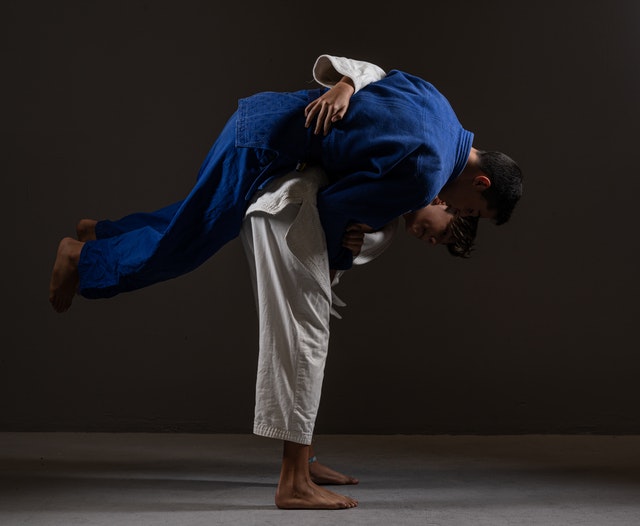
Which One is Better to Learn for Self-defense?
Martial arts are codified traditions and systems practiced for various reasons, such as law enforcement and military applications, self-defense, physical competitions, entertainment, mental, physical, spiritual development, etc. Due to self-defense, martial arts have gained popularity. Below we will discuss which martial art forms would be better.
In the case of Aikido, its style has been developed to take down multiple enemies without injuring them fatally. However, it has nothing to fall back on and if you cannot take down each enemy with a single move, you will be in trouble. It also has very low effectiveness against opponents who have decent enough martial arts skills. But it’s not every day that we are faced up against people skilled in martial arts. It’s also beneficial for people who must control their aggressiveness and not want to leave others with broken bones.
On the other hand, BJJ’s concept promotes that no matter the difference in size, one can take down their opponents using BJJ techniques. It’s one of the best techniques to learn for self-defense purposes as it teaches us to utilize our body as leverage to turn the tables against bigger opponents. It’s a combat sport and it’s not one of those arts that are meant to stay within confined streets. A person skilled in BJJ techniques is street-ready and can take care of themselves anywhere. It also teaches us what to do if we end up on the ground. We learn how to get out of bad situations using sweeps, throws, rolls, etc. This is crucial because this can happen in daily life situations and knowing what to do in these types of situations can be a lifesaver. But we must note that this art form was designed to take down single unarmed opponents. We will have a disadvantage if we are up against an armed combatant or a group of opponents.
We prefer BJJ for self-defense as it enables us to take on bigger opponents and utilize their strength against their own, plus its focus on ground fighting, where most street fights end up.
BJJ or Aikido for Kids
A burning question in every parent’s mind today is whether their kids should learn martial arts and if yes, which one they should learn. Now, not all forms of martial arts are created, not by a long shot. In this section, we will talk about what kind of martial arts is most suitable for kids.
Before that, let us say that learning any form of martial art is better than learning none. Kids fight. Moreover, if a kid is plunged into a fight without any skills or experiences, the most probable outcome would be that both the kids will come out from the fight with some bruises or possibly a bloody nose even. But if the kid has been taught martial arts, they can go into the fight with confidence and most importantly, a battle plan.
There are three main criteria that a martial art should fulfill to be suitable for a kid. They are as follows.
- Practical Self-defense: It’s the most obvious of the reasons to be taught martial arts. The form that will give the kid self- defense is the most suitable one. Also, a style that teaches them the sooner, that is the better art form.
- Include Sparring/ Simulations: For a kid to apply the techniques that he or she learned, there must be practice for it, so the is ready to use them when required.
- Minimize Harm: While we do not want our kid to be hurt during training, we also do not want them to beat their opponents to a hospital bed. Some martial arts require us to hurt the opponents badly to gain a win. That is how the kid ends up suspended or expelled, which is certainly not a win for anyone. So, we want our kids to learn self-defense while keeping the harm to a minimum level.
While Aikido is mostly based on self-defense, as we have mentioned before; it’s less effective against skilled opponents. Moreover, there is not a lot of actual practice involved in this form.
Whereas Brazilian Jiu-Jitsu, also known as the gentle art, is 90% sparring, giving the kid a boost in confidence going into a fight. It also helps the children develop patience and problem-solving skills as they must keep trying to figure out how to subdue their opponents with a submission. Also, it teaches you that no opponent is too big for you and that is a valuable life lesson for kids.
So, after considering all the facts, between the two, Brazilian Jiu-Jitsu is more suitable for kids to learn self-defense.
Conclusion
It is not rare to find yourself on the street faced by a mugger. While we cannot say for sure that it will happen, it’s better to stay prepared to face the situation rather than losing your wits. Learning martial arts can prepare you for that. Besides, it’s also beneficial for any of us to learn a form of martial arts as they has many benefits. We hope that now you can make a choice between BJJ and Aikido.
Share
Share on facebook
Facebook
Share on pinterest
Pinterest
Share on whatsapp
WhatsApp
Share on twitter
Twitter
Your may also like
ABOUT US
Jiu-Jitsu Street is a community of fun loving and hard rolling BJJ enthusiasts. Born out of our passion for the gentle art, we have decided to create this blog and help you on your journey. Let’s grow and learn together on this never-ending journey. Oss!
Recent Articles
LEGAL INFORMATION
Jiu-Jitsu Street is a participant in the Amazon Services LLC Associates Program, an affiliate advertising program designed to provide a means for sites to earn advertising fees by advertising and linking to Amazon.com. We are compensated for referring traffic and business to our Affiliate Partner companies.
